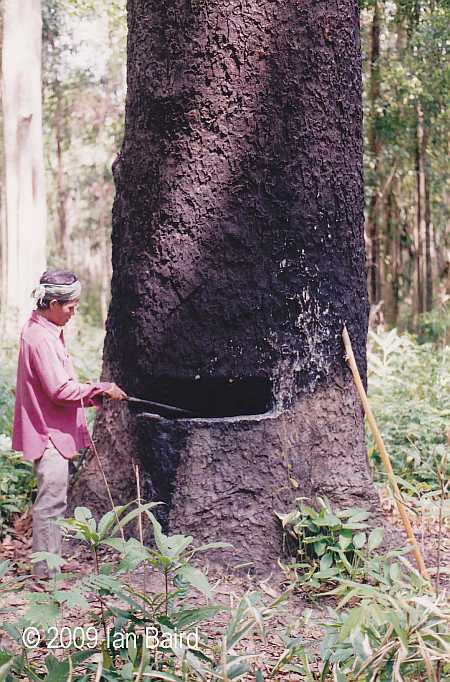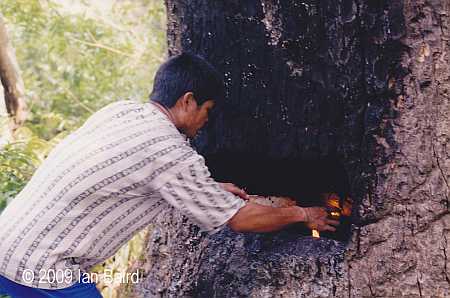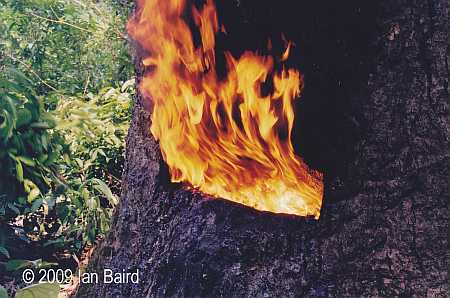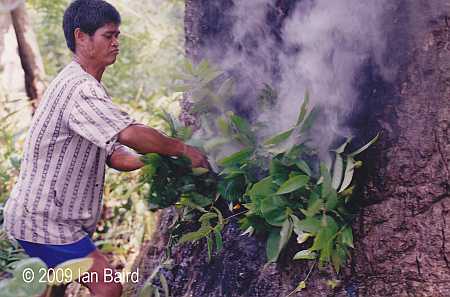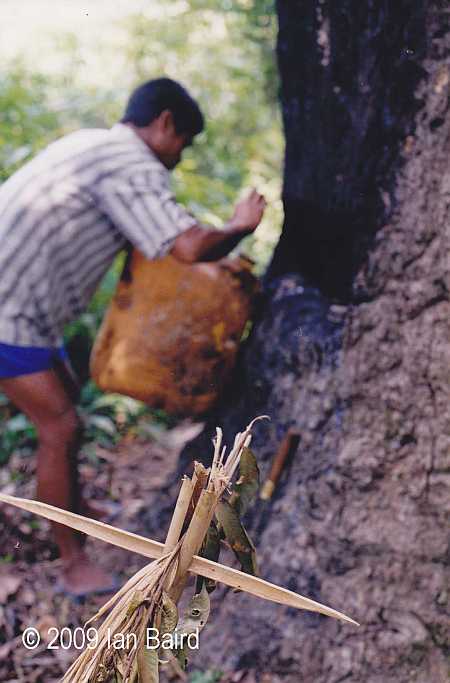The field research for this book was conducted in 2001-2003. A few years earlier the Lao government stopped issuing export permits for wood resin, although wood resin from Cambodia was still being exported to Thailand via Laos. The argument of the Lao government at the time was that wood resin harvesting was damaging the forests, and that the destructive practice should be discontinued. Unfortunately, however, once there was no longer a market for wood resin, many villagers decided to cut their resin trees down to sell the wood. So, the export ban did not have the effect of protecting the trees, as was seemingly expected. Moreover, logging companies also took advantage of the situation to convince villagers to allow them to cut down their resin trees.
In any case, through reviewing the literature, it became clear that some researchers believed that wood resin tree tapping was destructive, while others thought it was sustainable. It seemed appropriate to investigate wood resin tapping in detail. What I found was that in my field site wood resin trees were not dying as a result of being tapped. I also found that without exception, all the researchers who investigated wood resin tapping superficially–whether in Cambodia, Laos, Thailand, Malaysia or elsewhere–came to the conclusion that it was destructive to the trees. This appears to be based mainly on the visual effect of seeing big black burnt holes in the trunks of resin trees. It’s a bit like the negative impression many people have when they first see a burnt swidden fields. However, the reality associated with swidden agriculture are frequently much more complicated. I also found that all the researchers who investigated wood resin tapping in detail, regardless of which country, came to the conclusion that while it certainly is possible to kill a tree through resin tapping, the reality is that this rarely happens, and that despite the ugly black holes in the side of the tree trunks, the trees are very hardy and almost never succumb to tapping damage.
Unfortunately, the 2009 book is a bit expensive. It is, however, available through Amazon.com The publisher can also be contacted here.
The following photos (from the book) show the tapping process as performed by one of the Brao tappers I worked with during my research. The fires are necessary to stimulate resin production, but tappers lose production if they over-burn. Therefore, they tend to only allow fires to burn about 30 seconds before putting them out. Then they wait between a few days and a week for the resin to seep into the wedge shaped holes in the trunks. The resin is then taken from the tap holes and the holes are burnt again. The full details can be found in the book.
 Facebook
Facebook  Twitter
Twitter  Soundcloud
Soundcloud  Youtube
Youtube  Rss
Rss 